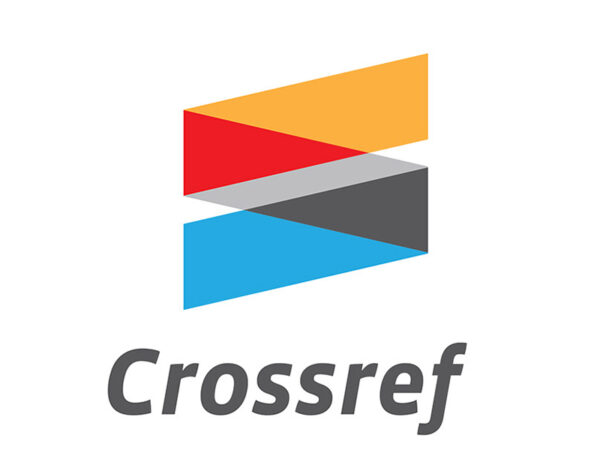Student Academic Performance Prediction Using Machine Learning Approach
Abstract
The academic performance of students in higher education has been a focal point of extensive research aimed at addressing issues such as academic underachievement, increased dropout rates, and delays in graduation, among other persistent challenges. Basically, student performance is the accomplishment of educational objectives, be they short-term or long-term. The study therefore describes the prediction of Student Performance aimed at improving the attainment of academic outcomes in higher education. By considering several performance factors like patterns of attendance, parent involvement, individual study habits, and preference in teaching methods, this system can portray a view of each student’s academic performance in a holistic way. Support Vector Machine (SVM) and Artificial Neural Network (ANN) algorithms have implemented in this proposed model to classify and predict student academic performance. A comparative study was also undertaken to determine which of these two algorithms has better accuracy or precision. The results show that the SVM outperformed the ANN.
References
[2] R. Ghorbani and R. Ghousi, “Comparing different resampling methods in predicting students’ performance using machine learning techniques,” IEEE Access, vol. 8, pp. 67899–67911, 2020.
[3] S. Priya, T. Ankit, and D. Divyansh, “Student performance prediction using machine learning,” in Advances in parallel computing technologies and applications, IOS Press, 2021, pp. 167–174. Accessed: Dec. 17, 2024. [Online]. Available: https://ebooks.iospress.nl/volumearticle/58051
[4] S. Priya, T. Ankit, and D. Divyansh, “Student performance prediction using machine learning,” in Advances in parallel computing technologies and applications, IOS Press, 2021, pp. 167–174. Accessed: Dec. 18, 2024. [Online]. Available: https://ebooks.iospress.nl/volumearticle/58051
[5] A. Acharya and D. Sinha, “Early prediction of students performance using machine learning techniques,” Int. J. Comput. Appl., vol. 107, no. 1, pp. 37–43, 2014.
[6] A. Asselman, M. Khaldi, and S. Aammou, “Enhancing the prediction of student performance based on the machine learning XGBoost algorithm,” Interact. Learn. Environ., vol. 31, no. 6, pp. 3360–3379, Aug. 2023, doi: 10.1080/10494820.2021.1928235.
[7] H. Pallathadka, A. Wenda, E. Ramirez-Asís, M. Asís-López, J. Flores-Albornoz, and K. Phasinam, “Classification and prediction of student performance data using various machine learning algorithms,” Mater. Today Proc., vol. 80, pp. 3782–3785, 2023.
[8] Q. Zhou, W. Quan, Y. Zhong, W. Xiao, C. Mou, and Y. Wang, “Predicting high-risk students using Internet access logs,” Knowl. Inf. Syst., vol. 55, pp. 393–413, 2018.
[9] E. Alhazmi and A. Sheneamer, “Early predicting of students performance in higher education,” IEEE Access, vol. 11, pp. 27579–27589, 2023.
[10] F. Qiu et al., “Predicting students’ performance in e-learning using learning process and behaviour data,” Sci. Rep., vol. 12, no. 1, p. 453, 2022.
[11] Y. Luo, X. Han, and C. Zhang, “Prediction of learning outcomes with a machine learning algorithm based on online learning behavior data in blended courses,” Asia Pac. Educ. Rev., vol. 25, no. 2, pp. 267–285, 2024.
[12] M. T. Sathe and A. C. Adamuthe, “Comparative study of supervised algorithms for prediction of students’ performance,” Int. J. Mod. Educ. Comput. Sci., vol. 13, no. 1, p. 1, 2021.
[13] M. Adnan et al., “Predicting at-risk students at different percentages of course length for early intervention using machine learning models,” Ieee Access, vol. 9, pp. 7519–7539, 2021.
[14] C. Huang, J. Zhou, J. Chen, J. Yang, K. Clawson, and Y. Peng, “A feature weighted support vector machine and artificial neural network algorithm for academic course performance prediction,” Neural Comput. Appl., vol. 35, no. 16, pp. 11517–11529, 2023.
[15] B. Van Liebergen, “Machine learning: a revolution in risk management and compliance?,” J. Financ. Transform., vol. 45, pp. 60–67, 2017.
[16] M. I. Jordan and T. M. Mitchell, “Machine learning: Trends, perspectives, and prospects,” Science, vol. 349, no. 6245, pp. 255–260, Jul. 2015, doi: 10.1126/science.aaa8415.
[17] Z. Wan, X. Xia, D. Lo, and G. C. Murphy, “How does machine learning change software development practices?,” IEEE Trans. Softw. Eng., vol. 47, no. 9, pp. 1857–1871, 2019.
[18] S. Suthaharan, “Support Vector Machine: Machine Learning Models and Algorithms for Big Data Classfication,” Integr. Ser. Inf. Syst., vol. 36, 2016.
[19] S. Benatti, B. Milosevic, E. Farella, E. Gruppioni, and L. Benini, “A prosthetic hand body area controller based on efficient pattern recognition control strategies,” Sensors, vol. 17, no. 4, p. 869, 2017.
[20] A. Iftikhar et al., “Risk classification in global software development using a machine learning approach: A result comparison of support vector machine and K-nearest neighbor algorithms,” J. Inf. Technol. Res. JITR, vol. 15, no. 1, pp. 1–21, 2022.
[21] S. Jafarzadeh-Ghoushchi, “Optimization of transportation system based on combined model using artificial neural networks and response surface methodology,” Int. J. Tech. Res. Appl., vol. 23, pp. 69–76, 2015.
[22] T. F. Awolusi, O. L. Oke, O. O. Akinkurolere, A. O. Sojobi, and O. G. Aluko, “Performance comparison of neural network training algorithms in the modeling properties of steel fiber reinforced concrete,” Heliyon, vol. 5, no. 1, 2019, Accessed: Dec. 19, 2024. [Online]. Available: https://www.cell.com/heliyon/fulltext/S2405-8440(18)34603-6
[23] F. Bre, J. M. Gimenez, and V. D. Fachinotti, “Prediction of wind pressure coefficients on building surfaces using artificial neural networks,” Energy Build., vol. 158, pp. 1429–1441, 2018.







